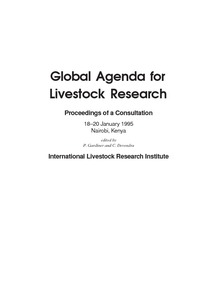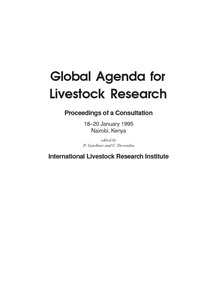Location
Vision, mission and strategy
ILRI's strategy 2013-2022 was approved in December 2012. It emerged from a wide processof consultation and engagement.
ILRI envisions... a world where all people have access to enough food and livelihood options to fulfil their potential.
ILRI’s mission is... to improve food and nutritional security and to reduce poverty in developing countries through research for efficient, safe and sustainable use of livestock—ensuring better lives through livestock.
ILRI’s three strategic objectives are:
- with partners, to develop, test, adapt and promote science-based practices that—being sustainable and scalable—achieve better lives through livestock.
- with partners,to provide compelling scientific evidence in ways that persuade decision-makers—from farms to boardrooms and parliaments—that smarter policies and bigger livestock investments can deliver significant socio-economic, health and environmental dividends to both poor nations and households.
- with partners,to increase capacity among ILRI’s key stakeholders to make better use of livestock science and investments for better lives through livestock.
This is ILRI’s second ten-year strategy. It incorporates a number of changes, many based on learning from the previous strategy (2000–2010, initially produced in 2000 and modified in 2002), an interim strategy (2011–2012) and an assessment of the external and internal environments in which the institute operates.
Members:
Resources
Displaying 961 - 965 of 1152Global agenda for livestock research. Proceedings of the consultation for the South-East Asia region
The papers presented here by the group covering the states of the Association of South East Asian Nations (ASEAN) had detailed discussions on defining the livestock priorities, research requirements, and ways to achieve these with a focus on Indonesia, Malaysia, the Philippines and Thailand. Discussions were conducted in three sequential phases. In the first phase, each country identified the priority agro-ecological zones (AEZs) and, within each, priority production systems in which livestock research was required. The results are presented in a tabular form.
Global agenda for livestock research: Proceedings of a consultation
The objectives of this consultation are to identify priority requirements for improved livestock productivity and development of the sustainable production systems in the developing regions; to identify cross-regional priorities, major constraints, the researchable areas and issues in livestock production most likely to bring distinct benefits and impacts; and to assist identification of participants and planning for future regional research workshops.
Foraging behaviour of cattle grazing semi-arid rangelands in the Sahel of Mali
This paper deals with foraging behaviour of cattle grazing semi-arid rangelands in the Sahel of Mali. It discusses the location of study site, vegetation in the grazing orbit, herd management and livestock behaviour. Results on seasonal variation in feed supply, selection of the annual grazing orbit in accessible land and of the daily route in the grazing orbit, selection of herbage mass patches within landscape units and selection of species are also presented in the paper.
Faecal excretion by ruminants and manure availability for crop production in semi-arid West Africa
Livestock manure is an important source of nutrients for crop production in semi-arid West Africa. An assessment of the potential of manure to sustain crop production calls for an estimation of the amounts of manure that could be produced and captured and the feed resources required to maintain livestock used for manuring. This paper presents estimates of the amounts of manure produced by cattle, goats and sheep fed ad libitum under confinement. A model is presented to predict the yearly faecal output by grazing ruminants under fluctuating feed supplies.
Animal production systems in south-east and east Asia. Potential and challenges for research
Animal production systems in South-East and east Asia are discussed in the context of their potential and challenges for research to address poverty alleviation, increased food production and food security and environmentally sustainable development. The projected human population increase, rising incomes and changing consumer preferences will accelerate the demand for, and access to food in the future. This will place considerable pressures on the use of natural resources (land, crops and animals).





